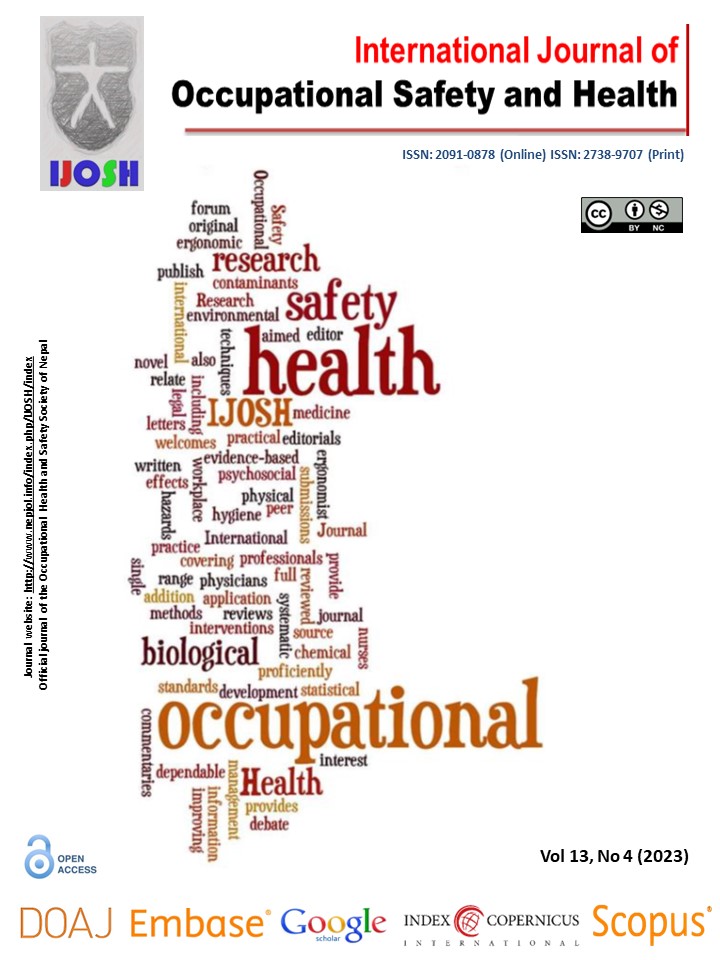Health Risk Assessment and Covid-19 Infection Rate by Using Bacterial Aerosol in Healthcare Workers in a Tertiary Care Hospital in Thailand During SARS-CoV-2 Pandemic
DOI:
https://doi.org/10.3126/ijosh.v13i4.49325Keywords:
Covid-19, Infection rate, Occupational exposure assessment, Tertiary care hospitalAbstract
Introduction: Severe acute respiratory syndrome coronavirus 2 (SARS-CoV-2) is a worldwide transmission and healthcare worker is the risk group. Therefore, the infection rate and health risk assessment from exposure to airborne transmission for healthcare workers were performed.
Methods: This cross-sectional study was carried out on 106 healthcare workers at four selected service areas in Songklanagarind Hospital, Thailand, from February to September 2021. The N6 impactor was used with simultaneous measurement of temperature, relative humidity, and wind speed. The general characteristics of subjects and hospitals were collected by questionnaire and presented by descriptive statistics.
Results: Most of the participants were female and they worked more than 8 hours per day. The bacteria concentration was highest in the Pediatric Outpatient Department (1837.46±177.52 cfu/m3). The lowest chronic daily intake and hazard quotient with no threshold (4.86±3.81, 95%CI: 3.59, 6.13) were at Covid-19 Intensive Care Unit - due to negative pressure ventilation in this room was effective in reducing the airborne concentration of the pathogens. Overall, the hospital’s hazard index with no threshold (30.87±35.25, 95%CI: 23.91, 37.83) was higher than 1.0, indicating that bacterial bioaerosol may affect healthcare workers’ health. The highest confirmed Covid-19 case was at Acute Respiratory Infection Clinic (19.29±10.67 cases/week). The probability of infection by SARS-CoV-2 in healthcare workers was high at Acute Respiratory Infection Clinic (1.0) and Covid-19 Intensive Care Unit (0.998±0.002, 95%CI: 0.998, 0.999).
Conclusion: Therefore, inhalation reference concentration for hospitals should be as low as possible and appropriate ventilation systems should be implemented with adherence to standards to protect healthcare workers.
Downloads
Downloads
Published
How to Cite
Issue
Section
License
Copyright (c) 2023 Pattama Senthong, Thitiworn Choosong, Nutjaree Saejiw, Mingkwan Yingkajorn, Smonrapat Surasombatpattana, Nathapat Pipitsuntornsarn, Saranyu Chusri

This work is licensed under a Creative Commons Attribution-NonCommercial 4.0 International License.
This license enables reusers to distribute, remix, adapt, and build upon the material in any medium or format for noncommercial purposes only, and only so long as attribution is given to the creator.





